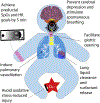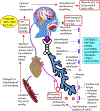Optimizing Oxygenation of the Extremely Premature Infant during the First Few Minutes of Life: Start Low or High?
- PMID: 32663594
- PMCID: PMC11877419
- DOI: 10.1016/j.jpeds.2020.07.034
Optimizing Oxygenation of the Extremely Premature Infant during the First Few Minutes of Life: Start Low or High?
Keywords: FiO(2); delivery room; immature newborn.
Figures



Comment in
-
Reply.J Pediatr. 2021 Feb;229:309-310. doi: 10.1016/j.jpeds.2020.11.018. Epub 2020 Nov 13. J Pediatr. 2021. PMID: 33197490 No abstract available.
-
Optimizing oxygenation of the preterm infant directly at birth: focus of future studies.J Pediatr. 2021 Feb;229:309. doi: 10.1016/j.jpeds.2020.11.017. Epub 2020 Nov 13. J Pediatr. 2021. PMID: 33197492 No abstract available.
References
-
- Dawson JA, Kamlin CO, Vento M, Wong C, Cole TJ, Donath SM, et al. Defining the reference range for oxygen saturation for infants after birth. Pediatrics 2010;125:e1340–7. - PubMed
-
- Kattwinkel J, Perlman JM, Aziz K, Colby C, Fairchild K, Gallagher J, et al. Part 15: Neonatal resuscitation: 2010 American Heart Association Guidelines for Cardiopulmonary Resuscitation and Emergency Cardiovascular Care. Circulation 2010;122(18 Suppl 3):S909–19. - PubMed
-
- Escrig R, Arruza L, Izquierdo I, Villar G, Sáenz P, Gimeno A, et al. Achievement of targeted saturation values in extremely low gestational age neonates resuscitated with low or high oxygen concentrations: a prospective, randomized trial. Pediatrics 2008;121:875–81. - PubMed
-
- Vento M, Moro M, Escrig R, Arruza L, Villar G, Izquierdo I, et al. Preterm resuscitation with low oxygen causes less oxidative stress, inflammation, and chronic lung disease. Pediatrics 2009;124:e439–49. - PubMed
-
- Wang CL, Anderson C, Leone TA, Rich W, Govindaswami B, Finer NN. Resuscitation of preterm neonates by using room air or 100% oxygen. Pediatrics 2008;121:1083–9. - PubMed
Publication types
MeSH terms
Grants and funding
LinkOut - more resources
Full Text Sources
Medical

